
下载亿题库APP
联系电话:400-660-1360

下载亿题库APP
联系电话:400-660-1360

请谨慎保管和记忆你的密码,以免泄露和丢失

请谨慎保管和记忆你的密码,以免泄露和丢失

为了帮助广大考生顺利通过口译笔译考试,帮考网为大家分享了一些口译笔译相关内容,希望大家每天坚持练习,积极备考。
I.Current Situation of Nuclear EnergyDevelopment and Nuclear EmergencyPreparedness
一、核能发展与核应急基本形势
It was in the mid-1950s that China embarked on itsnuclear industry. Over the past more than sixdecades China has made constant endeavors in thepeaceful use of nuclear energy by promoting theextensive application of nuclear technologies tosuch areas as industry, agriculture, medicine, theenvironment and energy. In particular, since theintroduction of the reform and opening-up policies in late 1978 China’s nuclear energy sectorhas seen particularly rapid development.
20世纪50年代中期,中国创建核工业。60多年来,中国致力于和平利用核能事业,发展推动核技术在工业、农业、医学、环境、能源等领域广泛应用。特别是改革开放以来,中国核能事业得到更大发展。
The development of nuclear power constitutes an important component of China’s nuclearenergy sector. Nuclear power is a clean, efficient and quality modern energy source. Chinahas consistently adhered to the principle of placing equal emphasis on development andsafety, and implemented the policy of developing nuclear power in a safe and efficient mannerby adopting the most advanced technology and most stringent standards. In March 1985construction started on the Qinshan Nuclear Power Station, the first of its kind in the mainlandof China. As of the end of October 2015, in the mainland of China 27 nuclear generating unitshad been in operation, with a total installed capacity of 25.50 GWe, and another 25 nucleargenerating units with a total installed capacity of 27.51 GWe had been under construction.China has already developed its large-sized advanced Pressurized Water Reactor (PWR) andHigh Temperature Gas-cooled Reactor (HTGR) technologies with proprietary intellectualproperty rights. Constructionof the HPR1000 technology pilot project has already commenced.The China Experimental Fast Reactor (CEFR) has achieved full power operation over 72 hours,signifying that China has already mastered the core technology associated with fast reactors.
发展核电是中国核能事业的重要组成部分。核电是一种清洁、高效、优质的现代能源。中国坚持发展与安全并重原则,执行安全高效发展核电政策,采用最先进的技术、最严格的标准发展核电。1985年3月,中国大陆第一座核电站——秦山核电站破土动工。截至2015年10月底,中国大陆运行核电机组27台,总装机容量2550万千瓦;在建核电机组25台,总装机容量2751万千瓦。中国开发出具有自主知识产权的大型先进压水堆、高温气冷堆核电技术。“华龙一号”核电技术示范工程投入建设。中国实验快堆实现满功率稳定运行72小时,标志着已经掌握快堆关键技术。
With the development of the nuclear energy sector, nuclear safety and nuclear emergency workhave seen steady synchronous reinforcement. China’s nuclear facilities and nuclear activitieshave all along been in safe and stable state and, in particular, the safety level of nuclearpower stations has witnessed constant improvement. None of the nuclear power generatingunits in China’s mainland has suffered events or accidents rated above Level 2 under theInternational Nuclear and Radiological Event Scale (INES), with the release of gaseous andliquid effluents kept far below the national regulatory limits. All of the under-constructionnuclear power generating units have intact quality assurance, safety supervision andemergency preparedness systems.
伴随着核能事业的发展,核安全与核应急同步得到加强。中国的核设施、核活动始终保持安全稳定状态,特别是核电安全水平不断提高。中国大陆所有运行核电机组未发生过国际核与辐射事件分级表二级以上事件和事故,气态和液态流出物排放远低于国家标准限值。在建核电机组质量保证、安全监管、应急准备体系完整。
China has always attached great importance to nuclear emergency work by taking a highlyresponsible attitude toward the safety of the people and society as a whole in enforcing nuclearemergency management. Arrangements have been made for nuclear emergency work intandem with the decision taken to proceed with nuclear power development. In the wake ofthe Chernobyl accident, China made it clear that there would be no change in its nuclear powerdevelopment policy, while stressing that a good job would be done on nuclear emergencypreparedness - with the result that national nuclear emergency work got off the ground in1986. In 1991 the National Nuclear Accident Emergency Committee was inaugurated andcommissioned to make overall planning and coordinate nuclear accident emergencypreparations and rescue work nationwide. In 1993 China promulgated the Regulations onEmergency Measures for Nuclear Accidents at Nuclear Power Plants to formalize nuclearemergency by regulatory means. In 1997 the first National Nuclear Emergency Plan (Scenario)was issued to lay out arrangements for nuclear emergency preparations and response in theform of a governmental decision. To cater to the needs of nuclear power development,multiple revisions have since been made to the original Plan and the latest version of NationalNuclear Emergency Plan has been enacted. At present, China’s nuclear emergencymanagement and preparations have seen comprehensive upgrades in terms of system,specialization, standards and scientific rigor.
中国高度重视核应急,始终以对人民安全和社会安全高度负责的态度强化核应急管理。早在作出发展核电决策之时就同步部署安排核应急工作。切尔诺贝利核事故发生后,中国明确表示发展核电方针不变,强调必须做好核应急准备,1986年即开展国家核应急工作。1991年,成立国家核事故应急委员会,统筹协调全国核事故应急准备和救援工作。1993年,发布《核电厂核事故应急管理条例》,对核应急作出基本规范。1997年,发布第一部《国家核应急计划(预案)》,对核应急准备与响应作出部署,之后,为适应核能发展需要,多次进行修订形成《国家核应急预案》。目前,中国核应急管理与准备工作的体系化、专业化、规范化、科学化水平全面提升。
Under China’s medium- and long-term development objectives, by 2020 the in-operationnuclear power installed capacity will reach 58 GWe in the mainland of China plus anadditional 30 GWe approximately under construction. By 2030 endeavors will have beenmade to put into place science and technology R&D systems along with their associatedindustrial systems representing the global development trends of nuclear power, and to ensurethat nuclear power technologies and equipment will take up a substantial share in theinternational market, thereby meeting the target of building a strong nuclear power country.Faced with the new situation, new challenges and new requirements, China is still confrontedwith shortfalls in nuclear emergency work in terms of technology, equipment, neededprofessionals, capacity and standards, which are the same problems encountered by othercountries in developing nuclear energy. China will seek to reinforce national nuclear emergencymanagement and raise its nuclear emergency work to a new level through idea innovation,scientific and technological innovation, and management innovation.
按照中国核电中长期发展规划目标,到2020年,中国大陆运行核电装机容量将达到5800万千瓦,在建3000万千瓦左右;到2030年,力争形成能够体现世界核电发展方向的科技研发体系和配套工业体系,核电技术装备在国际市场占据相当份额,全面实现建设核电强国目标。面对核能事业发展新形势新挑战,中国核应急在技术、装备、人才、能力、标准等方面还存在一定不足,这也是其他国家在开发利用核能进程中面临的共同课题。中国将通过理念创新、科技创新、管理创新,不断强化国家核应急管理,把核应急提高到新水平。
II. Guidelines and Policies for Nuclear Emergency Preparedness
二、核应急方针政策
As a large developing country, China has laid down basic guidelines and policies applicable tonuclear emergency preparedness through enactment of laws, administrative regulations andissuance of government decrees in the course of nuclear energy development.
中国是发展中大国,在发展核能进程中,通过制定法律、行政法规和发布政令等方式,确定核应急基本方针政策。
The basic objectives of nuclear emergency preparedness in China are: scientific coordinationaccording to law, timely and effectively coping with nuclear accidents, maximallycontrolling/mitigating or eliminating accidents, minimizing human casualties/fatalities andproperty damages, protecting the public and the environment, maintaining social order andsafeguarding the people’s safety and national security.
中国核应急基本目标是:依法科学统一、及时有效应对处置核事故,最大程度控制、缓解或消除事故,减轻事故造成的人员伤亡和财产损失,保护公众,保护环境,维护社会秩序,保障人民安全和国家安全。
The basic policy of nuclear emergency management in China is: constant vigilance, versatilecompatibility, unified command, active coordination, public safeguard and environmentalprotection.
中国核应急基本方针是:常备不懈、积极兼容,统一指挥、大力协同,保护公众、保护环境。
Constant vigilance, versatile compatibility. Nuclear emergency organizations at all levelsshould stay alert and vigilant at all times in readiness to respond to possible nuclearaccidents at any time. A nuclear emergency preparation and response system featuringcoordination of dedicated and standby systems, rational deployment of resources,combination of routine exercises and actual emergency response, and integration ofcivilian and military resources is to be established and perfected. Nuclear emergency workmust be planned and deployed in an overall manner together with other activities andimplemented compatibly with them.
常备不懈、积极兼容。各级核应急组织以“养兵千日,用兵一时”的态度,充分准备,随时应对可能发生的核事故。建立健全专兼配合、资源整合、平战结合、军民融合的核应急准备与响应体系。核应急与其他工作统筹规划、统筹部署、兼容实施。
Unified command, active coordination. Operators of nuclear installations shall coordinateand direct on-site nuclear accident emergency response actions in a unified manner, andgovernments at all levels shall coordinate and direct nuclear accident emergency responseactions within their respective jurisdictions in a unified manner. Under the unifiedorganization and direction of the government, nuclear emergency organizations, relevantdepartments, relevant enterprises, professional teams, social organizations and militaryrescue units shall work in coordination with one another in a joint effort to complete nuclearaccident emergency response actions.
统一指挥、大力协同。核设施营运单位统一协调指挥场内核事故应急响应行动,各级政府统一协调指挥本级管辖区域内核事故应急响应行动。在政府统一组织指挥下,核应急组织、相关部门、相关企业、专业力量、社会组织以及军队救援力量等协同配合,共同完成核事故应急响应行动。
Public safeguard and environmental protection. Public safeguard constitutes thefundamental objective of nuclear emergency preparedness, and it is incumbent upon us totake the attitude and actions that everything is for the people in coping with nuclear accidents.Environmental protection should be viewed as the fundamental requirement of nuclearemergency preparedness in such a way that every effort is made to minimize the release ofradioactive substances and do our best to control, mitigate and eliminate damages to theenvironment.
保护公众、保护环境。把保护公众作为核应急的根本宗旨,以一切为了人民的态度和行动应对处置核事故。把保护环境作为核应急的根本要求,尽可能把核事故造成的放射性物质释放降到最小,最大程度控制、减轻或消除对环境的危害。
The basic principles underlying nuclear emergency preparedness in China are: unifiedleadership, different levels of responsibility, tiered arrangements, coordination between thelocality and the military, quick response, and scientific handling.
中国核应急基本原则是:统一领导、分级负责,条块结合、军地协同,快速反应、科学处置。
Unified leadership, different levels of responsibility. Under the unified leadership of the centralgovernment, China has established a nuclear emergency management system featuringassignment of responsibility to different levels. The operator of the relevant nuclearinstallation is the major body of accountability for on-site emergency work. The people’sgovernment at the provincial level is the major body of accountability for off-site emergencyactivities in its jurisdiction.
统一领导、分级负责。在中央政府统一领导下,中国建立分级负责的核应急管理体系。核设施营运单位是核事故场内应急工作责任主体。省级人民政府是本行政区域核事故场外应急工作责任主体。
Tiered arrangements, coordination between the locality and the military. Nuclear emergencyinvolves the central and the local, the military and the government, on-site and off-site,specialized techniques and social administration. Therefore, it is necessary to uphold theprinciples of uniform deployment and centralized planning, mutual support, mutualcoordination, and comprehensive rescue at all times.
条块结合、军地协同。核应急涉及中央与地方、军队与政府、场内与场外、专业技术与社会管理等方面,必须坚持统筹兼顾、相互配合、大力协同、综合施救。
Quick response, scientific handling. When a nuclear accident occurs, all levels of nuclearemergency organizations shall be mobilized at the earliest possible time to rapidly control andmitigate the accident to minimize any impact on the public and the environment. Everyeffort shall be made to take into account the characteristics and rules applicable to nuclearaccidents as the basis for organizing studies and evaluations to enable scientific decision-making, and enforce a full range of response actions in an effective manner, includingradiation monitoring, worksite rescue, decontamination and cleansing, radiation protectionand medical treatment, and so forth.
快速反应、科学处置。核事故发生后,各级核应急组织及早介入,迅速控制缓解事故,减轻对公众和环境的影响。遵循应对处置核事故特点规律,组织开展分析研判,科学决策,有效实施辐射监测、工程抢险、去污洗消、辐射防护、医学救援等响应行动。
看到这里小伙伴们是否有所收获呢?希望帮考网为大家分享的内容能给大家带来帮助,后续也可以多关注帮考网,这里有更多的考试资讯,你想知道的都在这!
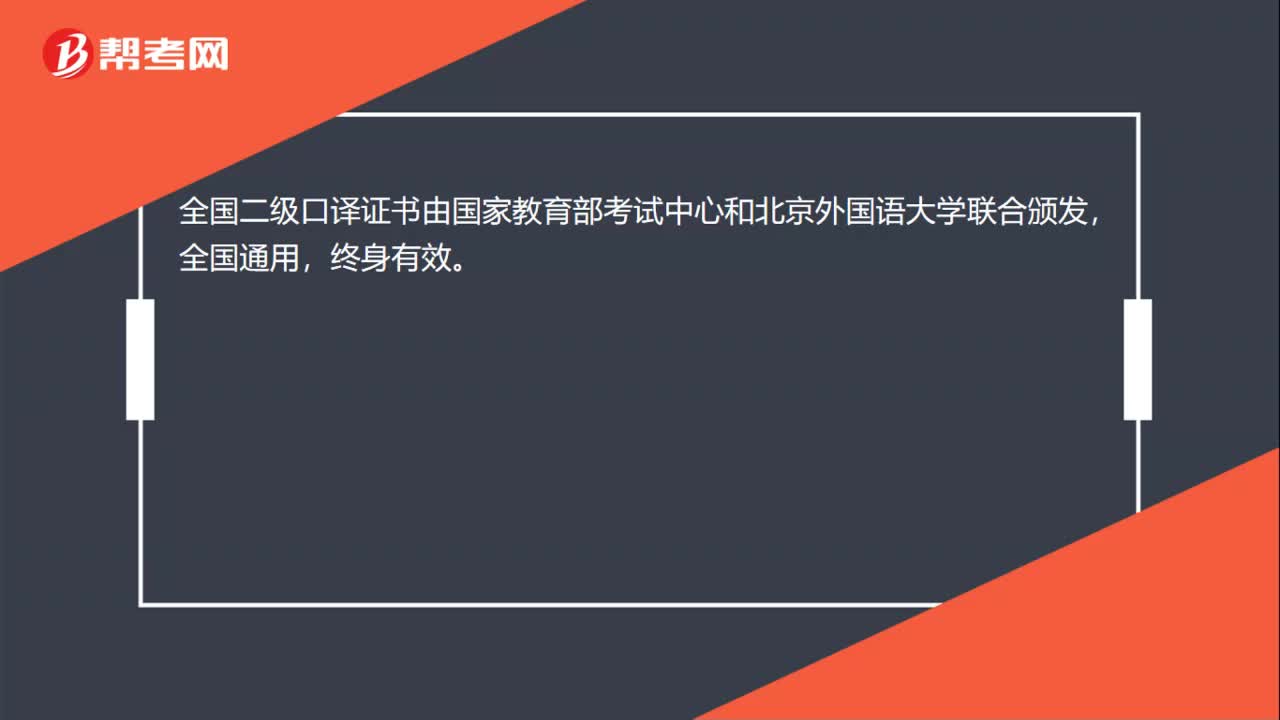 17
17全国二级口译证书是由哪个部门颁发?:全国二级口译证书是由哪个部门颁发?全国二级口译证书由国家教育部考试中心和北京外国语大学联合颁发,全国通用,终身有效。
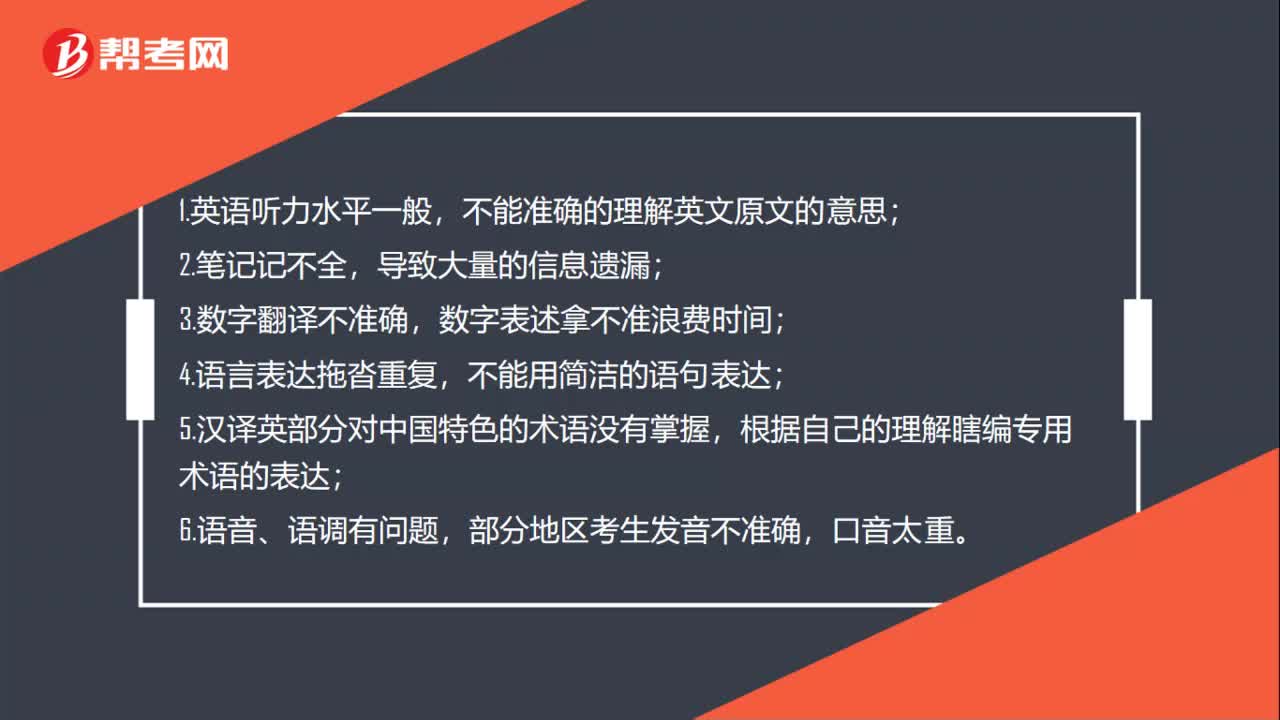 43
43口译考试应注意哪些问题?:口译考试应注意哪些问题?1.英语听力水平一般,不能准确的理解英文原文的意思;2.笔记记不全,导致大量的信息遗漏;3.数字翻译不准确,数字表述拿不准浪费时间;4.语言表达拖沓重复,不能用简洁的语句表达;5.汉译英部分对中国特色的术语没有掌握,根据自己的理解瞎编专用术语的表达;6.语音、语调有问题,部分地区考生发音不准确,口音太重。
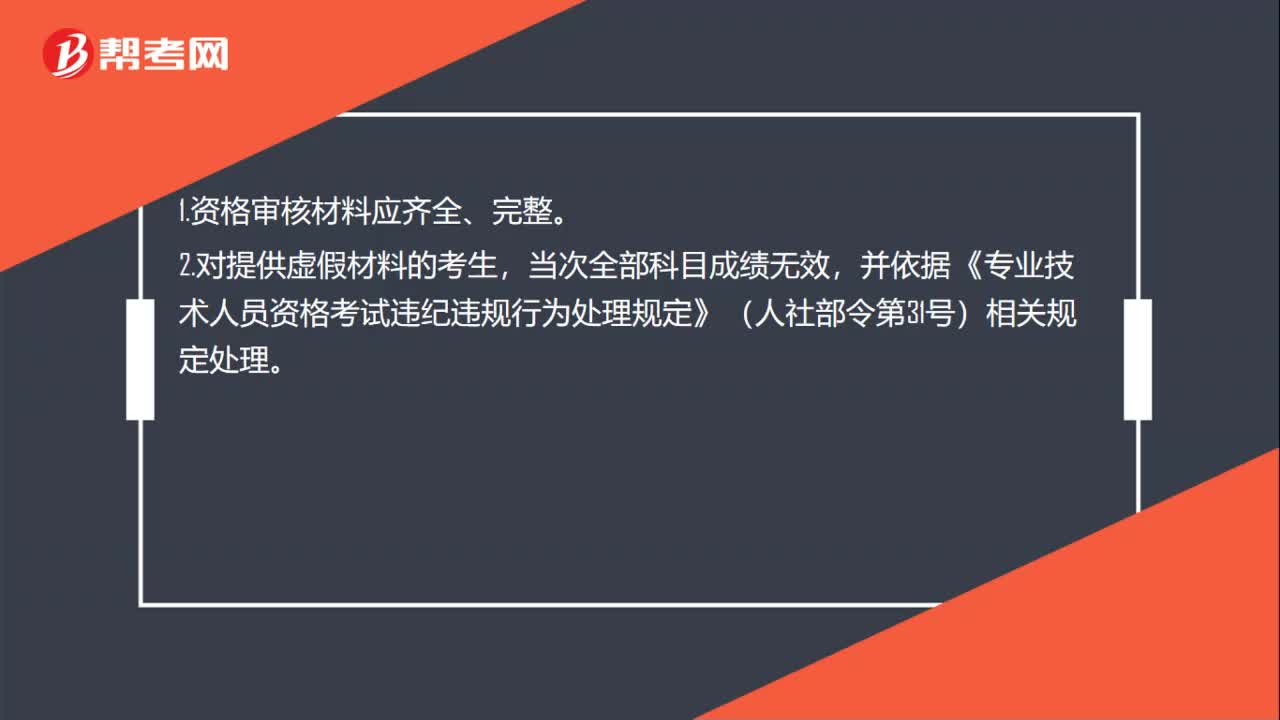 25
25口译笔译考试资格审核时的注意事项是什么?:口译笔译考试资格审核时的注意事项是什么?1.资格审核材料应齐全、完整。2.对提供虚假材料的考生,当次全部科目成绩无效,并依据《专业技术人员资格考试违纪违规行为处理规定》(人社部令第31号)相关规定处理。
 00:23
00:232020-06-03
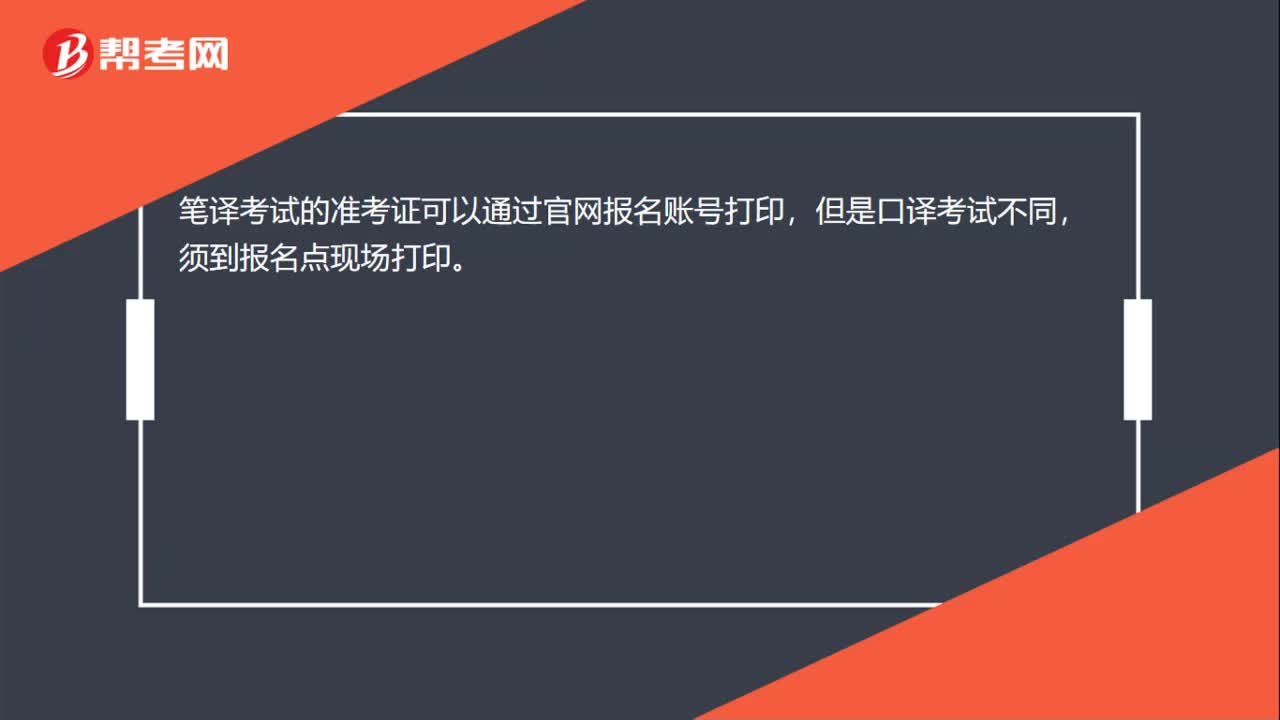 00:15
00:152020-06-03
 00:27
00:272020-06-03
 00:17
00:172020-06-03
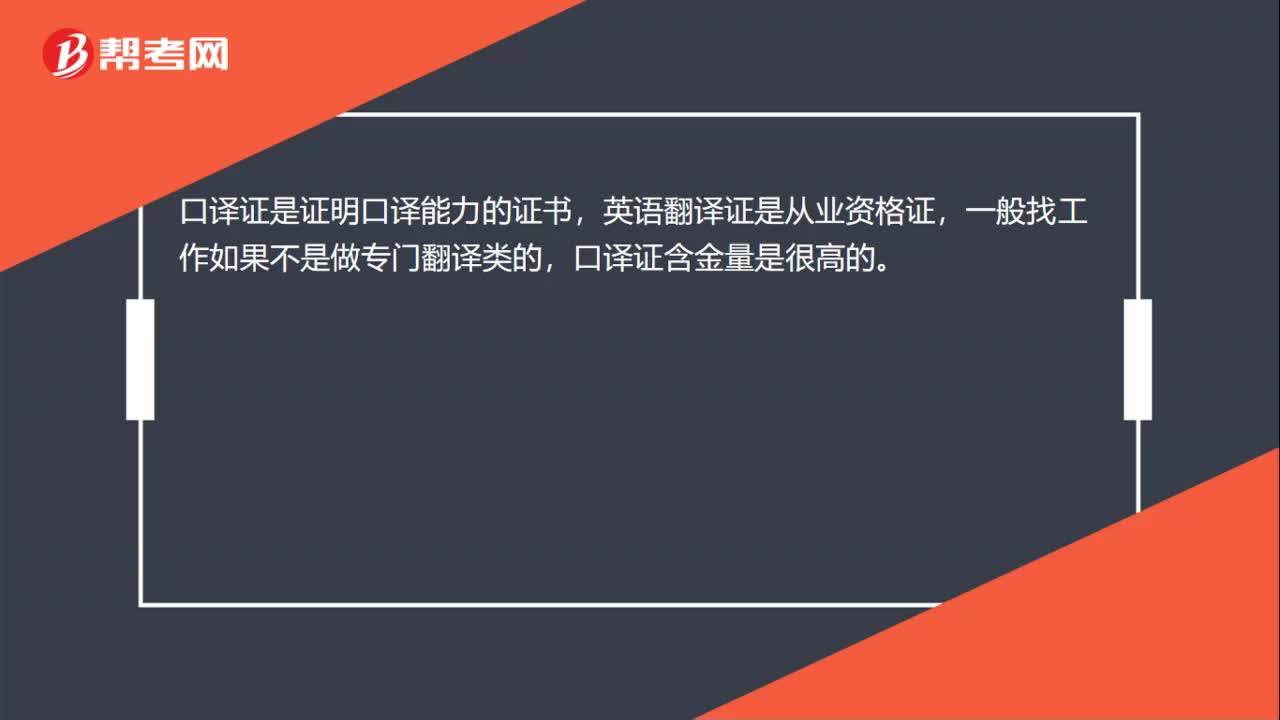 00:17
00:172020-06-03

微信扫码关注公众号
获取更多考试热门资料